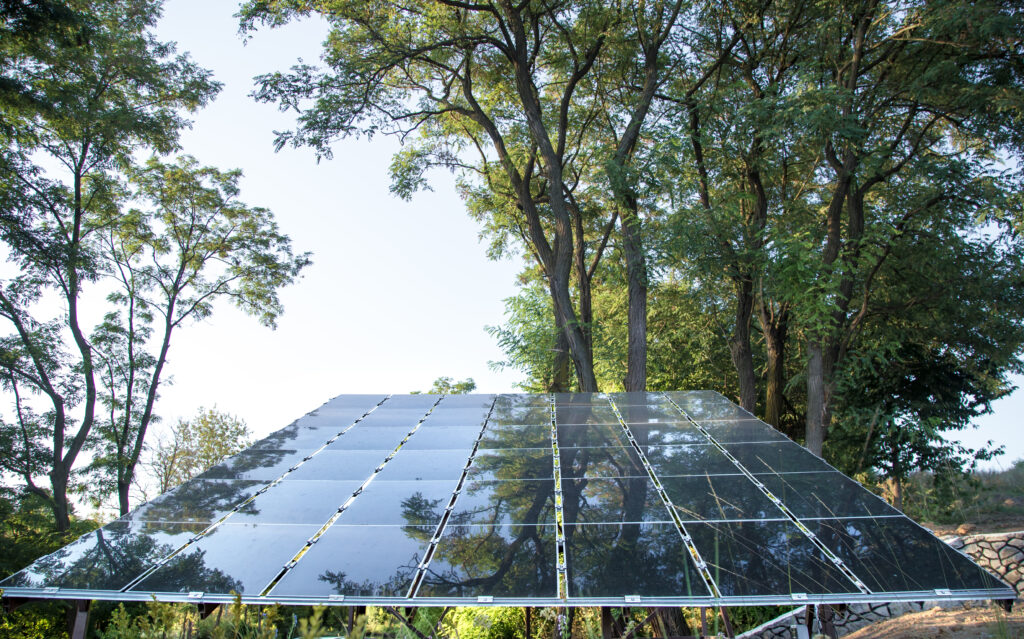Created with AIPRM Prompt “Human Written |100% Unique |SEO Optimized Article”
Solar panels have long been hailed as a sustainable and eco-friendly solution to high electricity bills. However, there are persistent myths about solar panel costs that often deter homeowners and businesses from making the switch. In this article, we’ll separate fact from fiction, exploring the real costs associated with solar panels and why they’re a smart investment.
The Myth of Exorbitant Solar Panel Costs
Myth 1: Solar Panels Are Incredibly Expensive
One of the most common misconceptions about solar panels is that they come with an astronomical price tag. While it’s true that solar panels used to be relatively expensive, the reality has evolved significantly over the years.
The Reality: Solar Panel Prices Have Dropped
Reality 1: Affordable Solar Panel Options Exist
In recent years, advancements in technology and increased competition in the solar industry have driven down the cost of solar panels. Today, there are affordable options to fit various budgets, making solar energy accessible to more people.
Solar Panel Financing Options
Reality 2: Financing Makes Solar Affordable
Many homeowners and businesses choose financing options such as solar leases or power purchase agreements (PPAs). These options allow you to install solar panels with little to no upfront costs, making it easier to transition to clean energy.
Return on Investment (ROI)
Reality 3: Solar Panels Offer Long-Term Savings
While the initial investment in solar panels may seem daunting, it’s essential to consider the long-term savings. Solar panels can significantly reduce or eliminate your electricity bills, resulting in substantial savings over the life of the system.
Government Incentives and Tax Credits
Reality 4: Federal and State Incentives Exist
Government incentives, such as the Federal Investment Tax Credit (ITC), can further offset the cost of solar panel installation. These incentives are designed to encourage renewable energy adoption.
Sustainability and Long-Term Savings
Reality 5: Solar Panels Reduce Carbon Footprints
Beyond financial benefits, solar panels contribute to a greener planet by reducing carbon emissions. Investing in solar energy aligns with sustainability goals and offers environmental benefits.
Solar Panels: A Home Value Booster
Reality 6: Increased Home Value
Homes equipped with solar panels tend to have higher resale values. Buyers appreciate the potential for reduced energy bills and often consider solar panels a valuable addition.
Debunking Installation Cost Myths
Myth 2: Installation Costs Are Prohibitive
Some believe that installation costs are excessively high, making solar panels unaffordable.
Reality 7: Installation Costs Vary
Installation costs can vary depending on factors like location, system size, and complexity. It’s essential to obtain multiple quotes to understand the actual cost for your specific situation.
DIY vs. Professional Installation
Reality 8: Professional Installation Ensures Efficiency
While some opt for DIY installation to save money, professional installation guarantees the system’s efficiency, durability, and compliance with local regulations.
Maintenance and Repairs
Reality 9: Minimal Maintenance
Solar panels typically require minimal maintenance, reducing long-term costs. Regular cleaning and occasional checkups are usually sufficient.
Solar Panel Lifespan
Reality 10: Longevity
Solar panels have a long lifespan, often exceeding 25 years. Their durability contributes to the overall value of the investment.
Myth: Solar Panels Only Work in Sunny Climates
Myth 3: Solar Panels Are Ineffective in Cloudy or Cold Regions
It’s a common misconception that solar panels only perform optimally in sunny climates.
Reality 11: Solar Panels Adapt to Various Weather Conditions
Solar panels can generate electricity even on cloudy or cold days, albeit at slightly reduced efficiency. They remain a viable option in diverse climates.
Solar Panels for Commercial Use
Reality 12: Business Benefits
Commercial entities can also benefit from solar panels. They can reduce operating costs, enhance sustainability efforts, and even enjoy tax incentives.
Conclusion
In conclusion, we’ve debunked the myths surrounding solar panel costs and shed light on the promising reality of affordable and sustainable energy. Solar panels are no longer out of reach; they are within grasp for homeowners and businesses alike. To take the next step towards a brighter, cost-effective future, click here to visit our
FAQs
1. How much do solar panels cost on average?
- The cost of solar panels varies depending on various factors but has become more affordable in recent years. On average, expect to pay between $10,000 and $30,000 for a residential solar panel system.
2. Do solar panels require a lot of maintenance?
- No, solar panels typically require minimal maintenance. Regular cleaning and occasional checkups are usually sufficient to keep them operating efficiently.
3. Are there government incentives for installing solar panels?
- Yes, there are several government incentives, including the Federal Investment Tax Credit (ITC), which can offset the cost of solar panel installation.
4. Do solar panels work in all weather conditions?
- Solar panels can generate electricity in various weather conditions, including cloudy or cold days, although their efficiency may be slightly reduced.
5. How long do solar panels last?
- Solar panels have a lifespan of over 25 years, making them a long-term investment in clean energy and cost savings.
